Diagnosing Chilling and Flooding Injury of Corn
Authors: Ross Ennen, Sr. Research Associate, and Mark Jeschke, Ph.D., Agronomy Manager
My Account

Authors: Ross Ennen, Sr. Research Associate, and Mark Jeschke, Ph.D., Agronomy Manager
Choosing corn planting date is an important management practice for maximizing corn yield potential. Often that date is dictated by prevailing weather and soil conditions, as well as the size of acreage to be planted. Historically, corn planting dates have moved earlier due to lengthening of the frost-free season, improved stress tolerance of newer corn hybrids, and the desire to avoid planting delays that could reduce yields. Early-planted corn is subject to greater risk of encountering cold temperatures and adverse weather systems often associated with those early spring dates.
Corn is a warm-season crop with tropical origins. It is not surprising then, that corn is susceptible to stresses that result from early planting under cold soil conditions. When corn is planted extremely early and soil temperatures are below 50 °F (10 °C), it is possible for corn seeds to remain in the soil up to three to four weeks prior to emergence. The length of this period will depend on the soil temperature and its water holding properties. During this time, corn may encounter a range of stresses, including injury from pre-emergence residual herbicides, insect damage, and disease pressure.
Even more problems may result from the physical properties of the seedbed, including crusting, ponding, or saturated soils. In addition, cold temperatures resulting from cold rain or even snow can severely impact the seed. This Crop Insights will discuss effects of cold soils and water on germination and emergence of corn, including diagnosing plant injury symptoms caused by chilling and flooding.
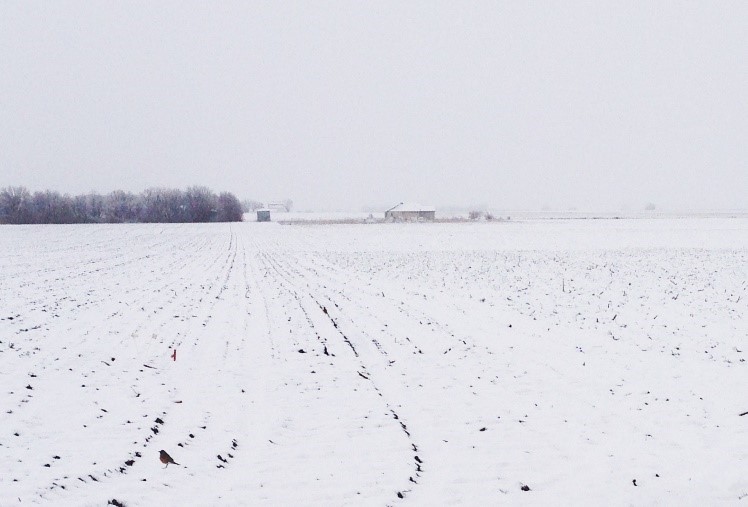
Snow covering a recently-planted corn field on May 1, 2013.
The early spring seedbed is a very unfavorable environment for corn seeds. Though dry seeds can be stored unharmed for many years at -20 °F (-29 °C) or below, corn planted very early is at risk to cold injury and even death once the seeds begin to imbibe water. Early planting often exposes seeds to hydration with cold water, which can cause direct physiological damage. In addition, prolonged exposure to low temperatures reduces seed and plant metabolism and vigor, increases sensitivity to herbicides and seedling blights and causes oxidation damage due to the effects of free radicals in the cell. Free radicals are unstable molecules that damage cells and organs. This damage is similar to damage that occurs in mammalian cells during aging and sun exposure.
When the dry seed imbibes cold water as a result of a cold rain or melting snow, imbibitional chilling injury may result. The cell membranes of the seed lack fluidity at low temperatures, and under these conditions, the hydration process can result in rupture of the membranes. Cell contents then leak through this rupture and provide a food source for invading pathogens. Cold water can similarly affect seedling structures as they begin to emerge.
Corteva Agriscience routinely conducts research studies on corn germination and emergence in stressful environments, in fields where soil temperatures are at or below the minimum recommended threshold for planting corn. Results of these studies have shown that temperatures at or below 50 °F (10 °C) are often detrimental to the germination and emergence process, especially if they persist long after planting (Table 1).
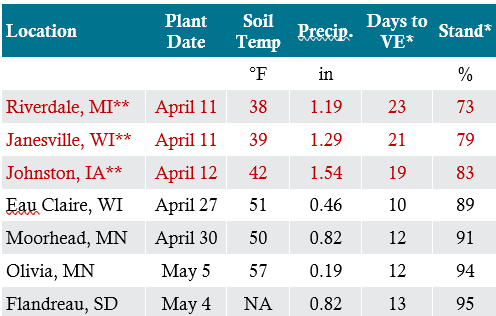
Table 1. Planting dates, average soil temperature the week after planting, cumulative precipitation the week after planting, days to emergence, and final stand in Corteva Agriscience research plots in 2018.
*Values reflect averages of multiple hybrids planted at each location
**Locations characterized as high stress environments for germination and emergence.
In Corteva research studies conducted in 2018, days to emergence and percent final stand varied considerably depending on the average soil temperature and rainfall during the week following planting. Three research locations experienced average soil temperatures below 50 °F (10 °C) with greater than 1 inch (2.5 cm) of rainfall the week following planting. These locations had substantially longer time to emergence and lower stand establishment than locations with soil temperatures above 50 °F (10 °C) and less rainfall. These data show that cold, wet soils after planting can have serious consequences for stand establishment. However, the degree of damage will vary with soil type and is generally greater in heavier or poorly drained soils.
Flooding can have an equally devastating effect on seedling emergence and survival as cold soils. Most corn hybrids can only survive for 24 to 48 hours under water, with smaller seedlings suffering the most damage. Flooding damages corn biochemically. By impairing mitochondria, it causes release of free radicals which damage cell membranes. Flooding also causes oxygen starvation and shifts the plant’s metabolic processes to anaerobic fermentation. Resulting acidosis (low pH) can kill the cells. At a minimum, flooding reduces the plant’s metabolic rate, making seedlings more sensitive to disease, insects, and herbicides. In fact, many disease-causing fungi such as Pythium thrive in standing water. Seedlings that are weakened by flooding or cold damage usually succumb to disease if the pathogen is present in the soil.
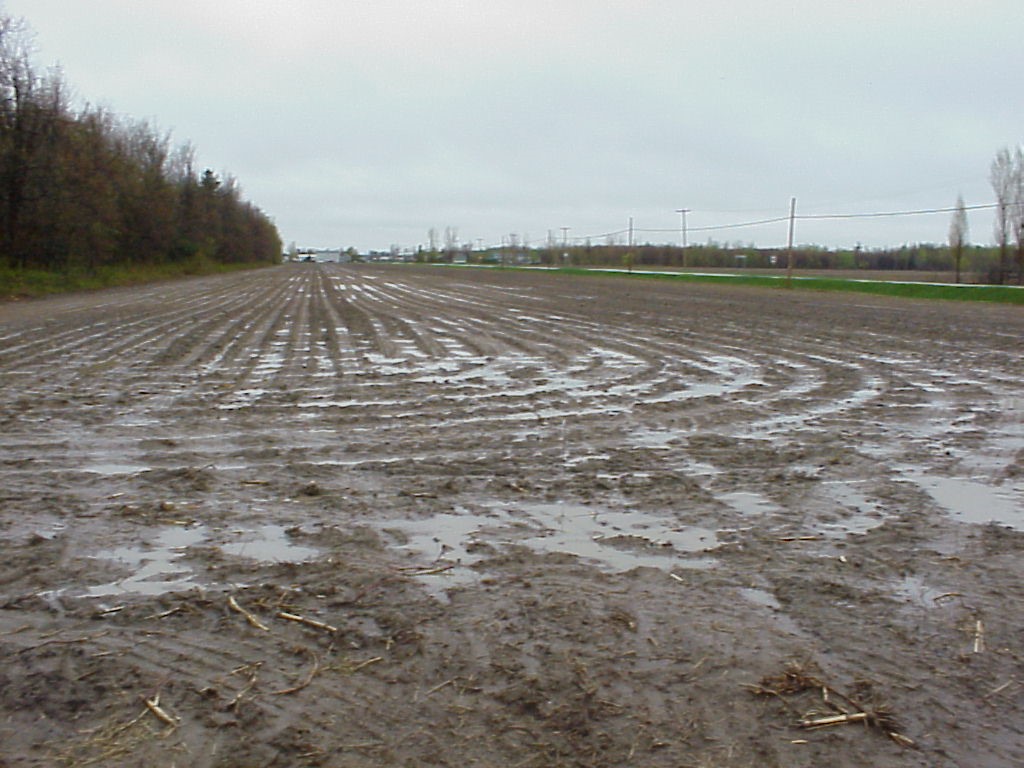
Field with saturated soil following spring rainfall.
Careful examination of damaged seedlings can provide clues into the likely causes of stand establishment problems following early planting or abnormally cold weather conditions. Table 2 lists the main symptoms and likely causes of early season damage. Figures 1-5 show diagnostic images of chilling and flooding damage to corn seedlings during germination and emergence.
For decades, Pioneer plant breeders have selected within the natural variation expressed by corn genotypes to develop hybrids with strong emergence and vigor characteristics under cool soil conditions. In the late 2000’s, Pioneer introduced a new rating for Pioneer® brand corn products called stress emergence. Stress emergence is a measure of the genetic ability or potential to emerge in the stressful environmental conditions of cold, wet soils or short periods of severe low temperatures, relative to other Pioneer brand products. Ratings of 7 to 9 indicate very good potential to establish normal stands under such conditions; a rating of 5 or 6 indicates average potential to establish normal stands under moderate stress conditions; and ratings of 1 to 4 indicate the product has below-average potential to establish normal stands under stress and should not be used if severe cold conditions are expected immediately after planting. Stress emergence is not a rating for seedling disease susceptibility, early growth, or speed of emergence.
Corteva research scientists are continuing to work to improve early season corn performance through conventional and molecular breeding, as well as through rigorous testing of research and commercial hybrids. By identifying molecular markers and pathways associated with superior cold germination, Corteva researchers are beginning to develop an understanding of the genetic basis of stress emergence. This knowledge should eventually lead to even stronger early-season performance in elite Pioneer brand corn products.
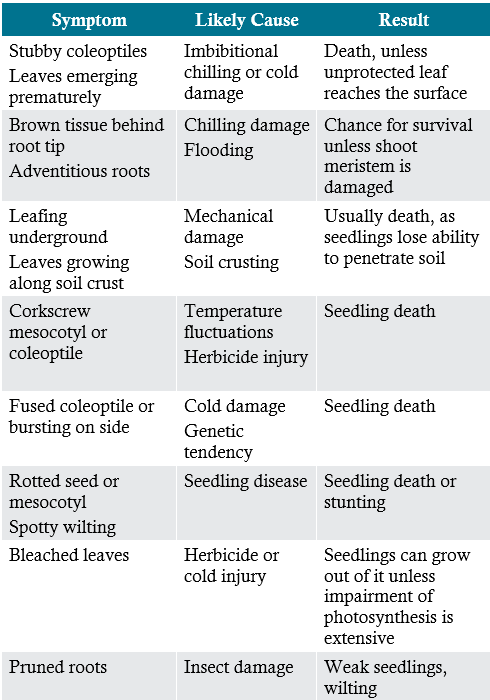
Table 2. Corn seedling symptoms and likely causes.
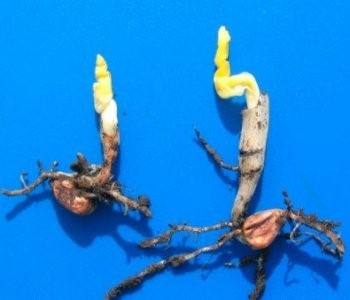
Figure 1. Imbibitional chilling and cold injury. Note club-shaped coleop-tile and leafing out under-ground.
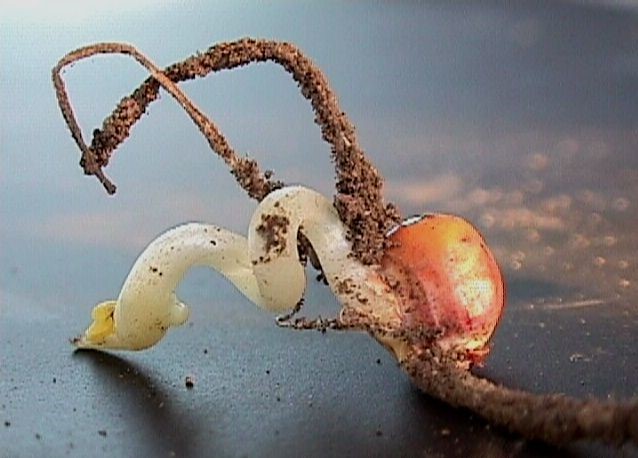
Figure 2. Corkscrew mesocotyl growth. Can be caused by cold soils, extreme soil temperature fluctuations, or soil crusting.
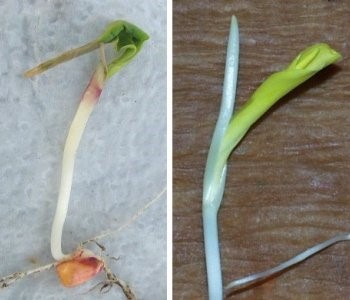
Figure 3. Fused coleop-tile / bursting on the side caused by cold injury.
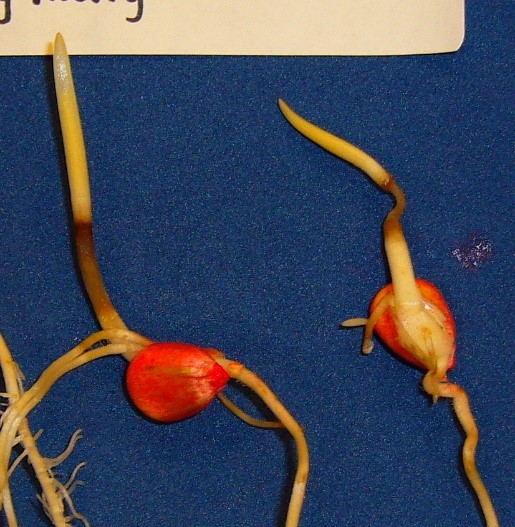
Figure 4. Corn seedlings with necrotic tissue resulting from flooding.
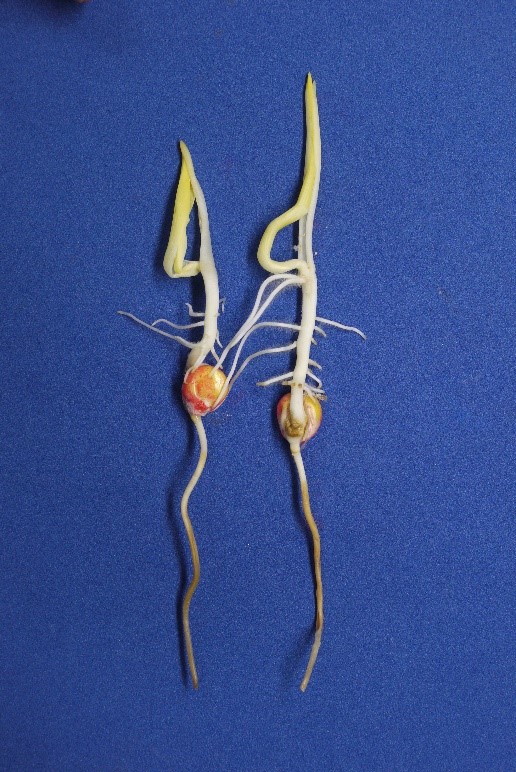
Figure 5. Corn seedings showing both brown root tissue and bursting on the side due to cold and flooded soil conditions.
The foregoing is provided for informational use only. Please contact your Pioneer sales professional for information and suggestions specific to your operation. Product performance is variable and depends on many factors such as moisture and heat stress, soil type, management practices and environmental stress as well as disease and pest pressures. Individual results may vary. Pioneer® brand products are provided subject to the terms and conditions of purchase which are part of the labeling and purchase documents.